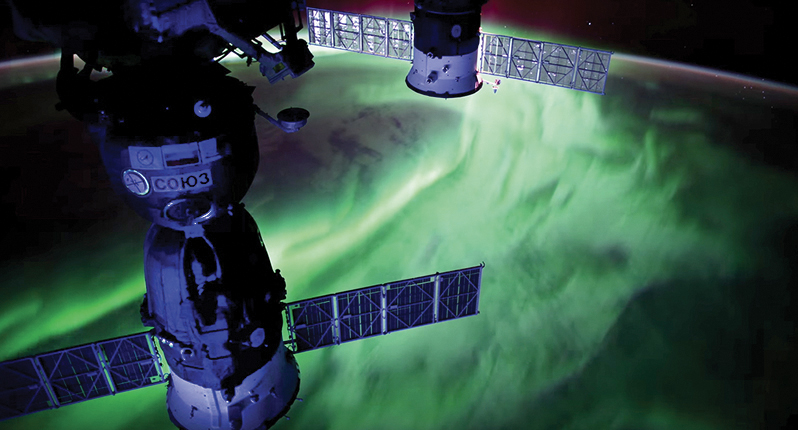A step toward deciphering auroras
DOI: 10.1063/PT.3.3547
Auroras have long dazzled sky watchers but befuddled physicists. Via a mechanism that remains unclear, electrons get yanked away from the magnetosphere and slammed into the ionosphere, where their collisions with atoms and molecules engender green, red, and blue light. (See the Quick Study by Bob Strangeway, Physics Today, July 2008, page 68

NASA

Now, for the first time, scientists have confirmed that Alfvén waves can move electrons, an important first step toward linking the waves to auroras. Rather than probing plasmas at auroral altitudes, Jim Schroeder at the University of Iowa and his colleagues created Alfvén waves in the lab. Using a copper antenna placed inside the Large Plasma Device at UCLA, the researchers launched waves through a roughly 15-m-long column of magnetized plasma. As each wave zoomed through the column at more than 0.1c, a pair of detectors recorded pulses of high-frequency radiation that manifested the shifting distribution of electrons in the plasma. The measurements revealed that the Alfvén waves triggered oscillations of the highest-energy electrons.
The observed oscillations are fundamentally related to the mechanism that’s thought to drive auroras: resonant electron acceleration. If electrons can be jolted by passing Alfvén waves, then they should be able to get picked up and boosted by the plasma disturbances as well. Schroeder and colleagues are designing follow-up experiments at UCLA to hunt for electrons surfing Alfvén waves. (J. W. R. Schroeder et al., Phys. Plasmas 24, 032902, 2017, doi:10.1063/1.4978293
More about the Authors
Andrew Grant. agrant@aip.org
